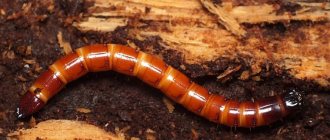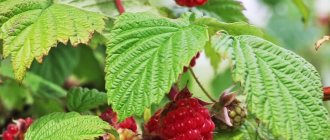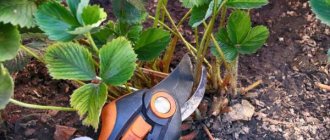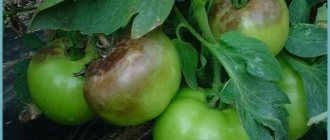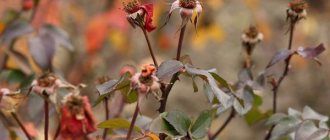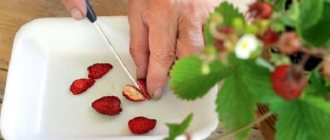Fruits and berries » Strawberries
0
1967
Article rating
Kira Stoletova
After the end of the fruiting period, strawberries need a balanced diet in order to safely survive the winter and produce a good harvest next year. Let's consider how to feed strawberries in the fall, and what time is best to do it.
Autumn feeding of strawberries - rules, timing and dosage
How does autumn fertilizing of strawberries differ from spring fertilizing?
The main difference between autumn feeding of strawberries and spring feeding is the purpose of fertilizing.
In the spring, we stimulate plant growth and provide the nutrients necessary for the growth of green mass and the formation of fruits.
In the fall, on the contrary, we need to feed the strawberries with microelements that will help them survive the winter. At the same time, we do not add nitrogen-containing compounds, so as not to provoke the bushes to gain green mass.
In the fall, fertilizers are also needed for the reason that the soil under the strawberries is quickly depleted. Because of this, in the absence of fertilizing in the fall, in a year or two the berry yield will be significantly reduced.
It is also necessary to take into account the fact that for new rosettes that have just been planted, fertilizing will be the first in the fall. Without it, they may simply not survive the winter.
After harvest
Once the berry crop is harvested, you should take care of the crop so that it bears fruit next year. Having spent a lot of energy, strawberries need supporting nutrition that will allow them to prepare for the coming winter. Fertilizing is applied after the last berries are collected, no later than September (for early and mid-season varieties).
Ammonia
Ammonia is an excellent substitute for expensive drugs. In terms of effectiveness, it can be compared to wood ash. Proper use of ammonia makes it possible to refuse the application of other mineral fertilizers. Due to rapid weathering, fertilizing based on ammonia solution must be applied immediately.
How to take care of the future berry harvest:
- Before work, put on gloves and a respirator;
- prepare the mixture in the fresh air;
- dissolve 40 ml (bottle) of 10% ammonia in a 10 liter bucket of water;
- add 5 drops of iodine to the composition;
- Pour the solution into a watering can and water the bushes generously.
Read about 18 ways to use ammonia in the garden
Novofert "Universal"
A complex fertilizer that replenishes nutrient deficiencies without having a toxic effect on plants. Thanks to the content of magnesium, boron, calcium, sulfur and other elements, the product enhances the crop’s resistance to adverse factors, significantly increasing profitability.
How to use Novofert:
- Dissolve 20 g of the drug in 10 liters of settled water;
- if you water at the root, a 10-liter volume will be enough for a 5 m2 plot;
- when spraying bushes, the prepared solution is enough to treat 200 m2;
- fertilizing is carried out no later than September;
- Strawberries must be fertilized twice with a break of 10-12 days.
How much does it cost: 270 rubles for 250 g.
When is the best time to feed strawberries in the fall, optimal timing
The optimal time for fertilizing in the fall is September. In warmer regions you can also feed in October.
It is undesirable to carry out the procedure later, as this affects the plant’s resistance to frost.
Experienced gardeners advise feeding strawberries with nutritious mixtures at the same time as trimming old leaves.
ON A NOTE. Before applying liquid fertilizer, be sure to water the soil under the strawberries to avoid chemical burns to the roots.
When to feed
In autumn, you should work with fertilizers before the first frost. Fertilizing is a necessary condition for successfully preparing plants for winter. It is better to carry it out in 2 stages:
- in early September, until the leaves turn yellow;
- at the end of October before the onset of cold weather.
The exact timing of fertilizer application in the fall depends on the variety of berries and the climatic characteristics of a particular region. If strawberries still produce a harvest in September, fertilizers are applied after the end of the berry picking. You definitely need to do it before the first frost. Autumn fertilization is not intended to improve the yield or taste of berries, but to enhance frost resistance and resistance to an aggressive environment.
Organic food for strawberries in the fall
This berry crop responds well to the addition of organic compounds. This type of fertilizer can be used both times during fertilizing in the fall.
Next, we will look at the main types of natural organic fertilizers that are suitable for crops in the fall.
Mullein
The classic way to feed berry crops in the fall is to prepare a liquid solution from mullein.
For this purpose, mix mullein and water in a ratio of 1 to 10. The mixture is infused throughout the whole day, and then the bushes are watered at the root at the rate of 1 liter of nutritional composition per 1 bush.
Litter
Bird (most often chicken) droppings are a very popular remedy. This type of fertilizer is useful not only for strawberry bushes, but also for the soil.
A nutrient mixture is prepared from 1 part litter and 15 parts water with mandatory infusion for 2 days.
It is necessary to pour fertilizer not under the plant, but between the bushes.
IMPORTANT! Do not get on strawberry leaves or whiskers.
Ash
Ash obtained from burning weeds and branches is a natural source of potassium and phosphorus. This fertilizing is applied the very last. And in the form of a powder.
To do this, ash is powdered onto the soil directly near the plants or simply scattered over the surface while digging the soil.
During the first feeding, it is also possible to use a liquid solution of a glass of ash and a ten-liter bucket of water. The bushes are watered with this infusion in September after applying other organic fertilizers. The consumption rate is half a liter per 1 bush.
Fertilizer from herbs
Green manure is used as a top dressing that will enrich the soil under the crop with useful microelements. For example, crushed lupine.
The grass is laid out between the rows and covered with earth.
During the winter, the grass decomposes, and the soil is saturated with necessary substances.
Manure
Manure is spread over the garden bed before the onset of cold weather. When it decomposes, it releases heat, which helps plants survive the winter comfortably.
Humus
It is permissible to use humus instead of manure. These types of fertilizers have approximately the same effect. The rate for applying humus is 100 kg per 10 square meters of beds.
Bone flour
It is a source of calcium and phosphorus. The product is poured with boiling water, allowed to cool, and then embedded in the ground.
Bone meal is good because it feeds plants with phosphorus for another 3 seasons.
Autumn care and preparation for winter
As soon as the last harvest is harvested, the crop has fully bear fruit, the berry needs help and support. An experienced gardener does not forget about the mandatory autumn care of strawberries in order to prepare the bushes for winter and the new season.
Closer to autumn and at the very beginning of September, the temperature drops and the humidity rises. There is a danger of fungal infections:
- fungal leaf spot;
- brown spot;
- black root rot;
- white spotting;
- withering.
For eradication treatments and protection of strawberries from diseases, the simplest and most inexpensive preparations are used:
- Fitosporin-M;
- Bordeaux mixture;
- Radomil;
- Topaz;
- copper sulfate.
Brown, unsightly spots are signs of brown spot (the most common cases of infection). The leaves quickly dry out and die. Any spotting disrupts photosynthesis processes and weakens the plant. The main rule is not to miss the moment of “no return”, when the entire plantation is affected by the fungus and the entire berry garden will have to be cleaned out.
Do I need to cut off strawberry leaves for the winter or not?
If the plantings are healthy, the varieties grow resistant, the berry garden is updated in a timely manner, then there is no need to remove the leaves . Strawberries will again have to spend a lot of effort to grow a thick cover of leaves.
If infection begins, fungal spores spread throughout the planting, and the leaves begin to die off rapidly, then it is better to cut off the entire above-ground part in the fall and burn it, and spray the ridges with eradicating solutions.
Important: cut leaves are used for humus or for making compost (for at least 2 years). Then all pathogenic fungi will die.
In the fall, a thorough inspection and cleaning of garden strawberry bushes is carried out in order to prevent strawberry mites:
- weakened, damaged vegetative parts are discarded;
- dispose of rotten, dry berries, dry leaves;
- remove old spent peduncles.
How to feed strawberries in the fall with mineral fertilizers
In addition to organic matter, it is permissible to use mineral fertilizers in the fall.
Such complex formulations contain the most essential nutrients in optimal concentrations.
In autumn, you need to give preference to potassium-phosphorus compounds.
For example, potassium salt (20 g per 10 l of water) and superphosphate (10 g per 10 l of water) are added to the beds.
You can immediately feed with complex fertilizer. Usually nitrophoska is used. A solution is prepared from it (2 tablespoons per bucket of water) and watered at the roots of the strawberries.
Also nitrophoska when planting new rosettes of plants. In this case, 40 grams of product are consumed per plant. The nitrophoska is poured into the hole and then mixed with soil.
Mixed fertilizers
Fertilizing strawberries in the fall with mixed fertilizers is quite popular, as it works for a very long time after being applied to the ground. You can use 250 g of ash, 30 g of nitrophoska and 20 g of potassium chloride. All three components must be mixed with 10 liters of water and poured over the strawberries. A liter of the substance is used per bush.
Dry mixed fertilizers are usually also made from humus, superphosphate and potassium substances. The ratio largely depends on the type of land, the average for normal soil of medium looseness: 2.5 kg of humus, 20 g of superphosphate and 10 g of potassium fertilizer per square meter of land.
Important! The application rates for organic, mineral and mixed fertilizers may differ depending on the type and quality of the soil, as well as the variety of strawberries.
What not to feed strawberries in the fall
Not all preparations are suitable for feeding.
For example, you should absolutely not use nitrogen fertilizers (urea, ammonium nitrate).
The fact is that nitrogen provokes the growth of leaves and tendrils on the plant, which is completely unnecessary before the onset of cold weather.
IMPORTANT! It is better to use fertilizers in the form of liquid solutions in the first ten days of September, when it is still quite warm outside. When fertilizing in October, it is better to incorporate granular mineral fertilizer into the soil.
What to choose from folk recipes
It is important for strawberries to receive the required supply of nutrients on time. Where the plant will get it from is up to the gardener to decide. Often, owners choose homemade mixtures made from simple and affordable products:
- Yeast. Both dry and fresh are suitable. 1 tsp. powder or a 50-gram piece is diluted in a liter of warm water. Let it sit for a couple of hours. Then dilute with water in a ratio of 1:5. You can crumble a 100 g pack into a 10 liter container and leave it for a day.
- Iodine. A bucket of water will require a couple of drops to spray strawberries on a warm September day.
- Serum. It is used in pure form or in combination with manure or wood ash.
Advice. You can also lay out beveled green manure between the rows or prepare herbal infusions. Nettle is especially good.
Strawberries are considered not the most capricious crop in terms of care. Timely feeding will help the bushes to develop properly, and summer residents to reap a bountiful harvest of their favorite berries.
Schemes for autumn feeding of strawberries
Now let’s look at the most common feeding schemes for this crop in the fall.
The standard scheme includes 2 fertilizer applications. The first time you need to feed it is in early September. The second is to feed in the last days of September (for colder regions) or the first days of October (for southern regions).
First scheme
In September we feed strawberries with “Kemiroy Lux” (50 g per 1 sq m of beds). In October we fertilize with potassium humate (according to the instructions).
Second scheme
September: solution of mullein (10 l) and wood ash (200 g).
October: complex composition of wood ash (200 g), water (10 l), nitrophoska (40 g), potassium salt (20 g). Each bush is watered separately with this liquid mixture.
Signs of missing elements
A deficiency or excess of microelements can be determined by the external condition of the stems and leaves.
Nitrogen
If there is a shortage, the plants form small and pale leaves in the summer. The bushes grow slowly, bloom and bear fruit weakly. This usually happens with crops growing on acidic, cold and waterlogged soil.
When overfed, strawberries intensively increase their green mass, which inhibits flowering and berry formation.
Superphosphate
A sign of shortage - the leaves become smaller, the old ones become covered with a brownish coating, and the productivity of the bushes decreases.
The deficiency of this component increases if organic fertilizers are not applied for 2-3 years.
Potassium
If there is a deficiency, the leaves acquire a bluish-green color, become dull, and contain elements of a reddish tone. The leaf blades wrinkle and grow unevenly. The berries ripen not so aromatic, their taste deteriorates.
Strawberries planted on peat, sandy and sandy loam soils must be fed with this microelement 2-3 times per season.
Copper
If there is not enough copper, the leaves become variegated, wither, turn pale, the tips of the shoots die off, and the growth of the aerial part slows down. This phenomenon occurs on young seedlings, especially in extreme heat and drought.
Plantations planted on sandy and acidic soils usually suffer from deficiency.
Manganese
With a deficiency, elements of chlorosis appear on the upper leaves, as with iron deficiency. Often the leaves fall off. This happens when grown on acidic and alkaline soils.
Calcium
If strawberries lack calcium, the leaves become covered with chlorotic stripes, the edges curl, and the aboveground part stops growing and developing.
If there is an excess, the green mass turns intensely yellow, while the veins remain green.
Deficiency is usually observed on red soils, podzolic and peat soils.
Bor
Due to deficiency, the leaves become small, curl, the veins turn red, and necrotic spots appear. Strawberries bloom sparsely and produce a tasteless harvest; the berries become smaller.
Excess causes intoxication of the bushes - they turn yellow and dry out.
It is better to apply boron fertilizers together with deoxidizing components (calcite, dolomite flour, slaked lime) and a complex composition of phosphorus, potassium and nitrogen.
How to feed strawberries in the fall after transplanting
If you are transplanting and propagating strawberries in the fall, then the crop must be fed.
The soil under the beds is fertilized with a complex composition consisting of humus (3 kg), superphosphate (40 g) and potassium chloride (10 g). This amount of fertilizer is enough for 1 sq. m.
If you did not add mineral fertilizers when you planted the young rosettes, you can water the bushes with ash infusion or bone meal extract.
If you prefer mineral fertilizers, you can feed them exclusively with a liquid solution of superphosphate.
How to feed strawberries in the fall after pruning
After this procedure, the culture is fed with the same phosphorus- and potassium-containing preparations. But there is one caveat.
Sanitary pruning of old leaves is usually carried out at the very end of the season, the last days of September - the first days of October. At this time, liquid medications cannot be used. Otherwise, there is a great risk of ruining the culture.
Therefore, it is necessary to use dry fertilizers. For example, manure that is scattered between the rows is suitable from organic matter. It is allowed to take almost any mineral fertilizer, but just do not prepare a solution from it, but incorporate it into the soil in dry form.
Feeding remontant strawberries in the fall
For remontant varieties, soil preparation in the fall is very important. This variety bears fruit almost the entire season, so it is important that the soil is nutritious.
If you do not apply fertilizers during the season, then in the fall you need to add the following complex: 50 g of superphosphate, 20 g of potassium sulfate, 8 kg of humus (can be replaced with manure or compost). All this for 1 sq. m.
Also, for remontant varieties of strawberries, a solution of superphosphate and wood ash will be useful. The complex composition is prepared as follows.
Take 2 tablespoons of superphosphate, which are filled with hot water (about 1 liter) for a day. Next, the volume of liquid is adjusted to 10 liters and 0.5 kg of wood ash is added. Mix everything thoroughly until a homogeneous consistency is obtained and water the bushes at the root.
IMPORTANT! Don't forget to mulch the soil in the fall. This way you will protect the strawberry root system from freezing.
Timing of fertilizing
Immediately before planting, fertilizers are not applied to garden strawberries. High concentrations of minerals will burn the root system.
Attention! Nutrient mixtures are applied at least 2.5-3 months before the planned planting of strawberries.
Optimal timing for applying potassium and phosphorus fertilizers for the planned planting of berries:
- for spring planting - in the fall of the previous year;
- for autumn planting - in early spring.
In fruit-bearing plantings of garden strawberries, fertilizers are applied according to the following scheme:
- in early spring - half of the nitrogen fertilizer;
- after fruiting of the crop (at the end of August, closer to autumn) - the second half of nitrogen, phosphorus and potassium;
- In autumn, the soil is filled with phosphorus and potassium fertilizers.
Remontant strawberry varieties require special nutrition - fertilizers are applied 3-4 times per season :
- in spring – part of nitrogen;
- after the first fruiting - the second part of nitrogen fertilizing, phosphorus and potassium;
- after the second and last wave of fruiting - the third part of nitrogen fertilizers, potassium-phosphorus fertilizers.
Be sure to add microelements after harvesting, in addition to phosphorus and potassium: zinc, iron, cobalt. The addition of microelements will protect garden strawberries from chlorosis.
How to feed with folk remedies for a better harvest
Some folk remedies are also quite effective.
For example, green manure (lupine, buckwheat) is often used. The mown grass is crushed and covered between rows.
When it rots in winter, it decomposes into useful substances that saturate the soil.
Yeast solution is also used. Yeast is rich in microelements and vitamins and has a beneficial effect on soil structure.
The working solution is prepared from 100 grams of live yeast diluted in 2 liters of warm water. Then the volume of liquid is adjusted to 10 liters and left to ferment for 5-6 hours. Next, watering is carried out at the rate of 0.5 liters per 1 bush.
In the first ten days of September, you can spray with iodine water (a couple of drops per bucket of water). This element is important for the flowering of the plant. In addition, iodine is useful for the prevention of fungal diseases in strawberries.
Organics: possible options
When choosing what to feed strawberries with, many summer residents prefer safe and effective organics. However, there are also important rules in its use. For example, fresh manure should not be placed directly into the strawberry hole. It will burn the roots and do more harm than good. Therefore, cow or horse waste that has not had time to rot is laid out between the rows. In winter, organic matter will warm the soil on a berry plantation, and in the spring it will begin to actively decompose, enriching the soil with the necessary elements.
A good alternative to manure is bird droppings. Typically, homestead owners take waste from the chicken coop. This is one of the most affordable fertilizers for strawberries. Bird excrement reduces soil acidity and nourishes the soil. But this fertilizer cannot be used in its pure form. Proceed as follows:
- thoroughly stir 2 kg of litter in 8 liters of warm water;
- leave to ferment for 3 days;
- dilute with water in a ratio of 1:15. Now you can feed strawberries with this solution by watering the rows.
Experienced summer residents advise preparing an even less saturated composition. To do this, you need to dilute the fermented droppings with water in a ratio of 1:20 or even 1:25. Due to its low concentration, you can pour this fertilizer directly under the strawberry root. Make sure that the solution of any degree of saturation does not get on the greens.
Liquid fertilizer is prepared in a similar way from cow or horse manure. Traditionally it is called mullein. The mixture is left to ferment for a period of 3 to 14 days and stirred daily. Before use, dilute with water in a ratio of 1:10.
By the way. Bone meal is great for strawberries. Pour boiling water over the substance, let it cool and embed it in the soil.
Common mistakes
- Using large amounts of nitrogen-containing fertilizers. This provokes the growth of green mass. Before winter, this is dangerous, since the shoots can be damaged by frost.
- Application of fertilizing at the wrong time. It is necessary to add nutrients in due time, otherwise they will not be absorbed by the plant and will not bring the desired result.
- Use of highly concentrated formulations. The working solution must be prepared according to the instructions, otherwise there is a high risk of burning the roots of the plant.
- Dry granules are not embedded in the soil, but remain on the surface. Because of this, the fertilizer does not work. For dry fertilizing to have an effect, the granules need to be embedded in the soil, where they will decompose and release nutrients.
Answers to frequently asked questions
Do strawberries need fertilizing in the fall?
Necessarily. Strawberries need mineral components to lay the foundations for the future harvest and survive the winter.
Which fertilizers are healthier, organic or mineral?
The best option is to use both types of fertilizers. Organic matter is added during the first autumn feeding, and mineral water during the second.
At what time should you feed?
There are no exact dates for feeding. You need to focus on the climatic conditions of the region and the weather this year.
Why fertilize?
Garden crops differ significantly from their wild relatives. Strawberries are no exception. The fruits are significantly, sometimes tens of times, larger, usually there are many more of them, and the fruiting period is longer, and in remontant varieties this process can continue until the first snow.
The abundance and size of the fruits necessitate annual feeding, and if this is not done, the yield in 2-3 years will actually approach that typical for wild strawberries growing in natural conditions (3-5 berries).
Without feeding, any of the modern varieties behaves the same. The berries become smaller and their number decreases. The fibrous root system quickly draws out the substances it needs from the top layer of soil, and since there is no main root that could grow into deeper layers, replenishment from them is impossible. Experiments with planting other plants will not yield anything; in a year or two everything will happen again.
Only timely fertilizing with mineral and organic fertilizers can save the situation. Autumn feeding is especially important, since plants need to prepare for winter in order to survive it without losses and begin the next equally abundant fruiting.


